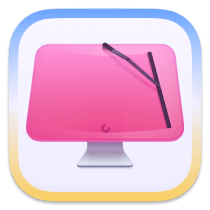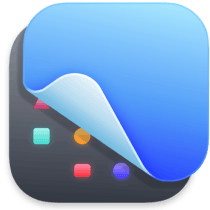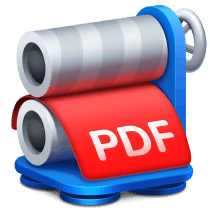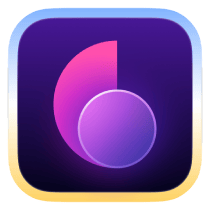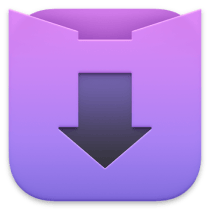Work
CleanShot X
Take better screenshots and GIFs
99%•Mac
TextSniper
Extract text from visuals
99%•Mac
Spark Mail
Manage emails easier
89%•Mac, iOS
BetterZip
Create and encrypt archives
96%•Mac
Numi
Calculate and convert anything
99%•Mac
ForkLift
Manage files across servers
96%•Mac
Session
Work in short intervals
98%•Mac, iOS
Timing
Track time you spend in each app
98%•Mac
BusyCal
Sync your tasks with calendar
96%•Mac
Yoink
Improve drag and drop
99%•Mac
Archiver
Compress and unarchive files
97%•Mac
Path Finder
Copy, delete, and sync files
92%•Mac
SideNotes
Notes on the side of your screen
97%•Mac
NotePlan
One space for all your work
97%•Mac, iOS
Canary Mail
Write and manage emails
84%•Mac, iOS
Dropzone
Complete everyday tasks faster
99%•Mac
HazeOver
Dim background windows
99%•Mac
Default Folder X
Access recent and favorite files
97%•Mac
Mate Translate
Translate anything
95%•Mac
Renamer
Rename a batch of files
96%•Mac
HoudahSpot
Find files faster
98%•Mac
Xnapper
Create shareable screenshots
96%•Mac
Dato
Stay on top of your schedule
99%•Mac
In Your Face
Get full-screen meeting alerts
99%•Mac, iOS
Timemator
Track productivity per project
95%•Mac, iOS
Gifox
Capture GIFs from your screen
98%•Mac
Hand Mirror
Check Mac camera in a click
98%•Mac
Commander One
Two-pane file manager
95%•Mac
BusyContacts
Build your contact database
93%•Mac
Hookmark
Link files, webpages, PDFs
97%•Mac
Slidepad
Keep most used apps at hand
92%•Mac
MarginNote
Study more productively
92%•Mac
AnyTrans for iOS
Move files between macOS and iOS
76%•Mac
ChronoSync Express
Sync and back up folders
95%•Mac
Due
Receive persistent reminders
96%•Mac
Prizmo
Scan and OCR any document
93%•Mac, iOS
Backtrack
Record audio from the past
78%•Mac
Dropshare
Save space with file sharing
92%•Mac, iOS
World Clock Pro
Work across time zones
89%•Mac, iOS
MoneyWiz 2026
Budget and manage bills
81%•Mac, iOS
Chronicle
Track bills and subscriptions
91%•Mac, iOS
Be Focused
Manage to-do lists with timers
97%•Mac
iBoysoft MagicMenu
Expand your Mac’s right click
88%•Mac
2Do
Schedule tasks and reminders
93%•Mac
GoodTask
Sync to-dos with reminders
93%•Mac
Workspaces
Set up your work in one click
94%•Mac
Calendars
Track tasks, events, and plans
85%•Mac, iOS
TaskPaper
Plain-text task management
98%•Mac
Focus 2
Block websites and apps
90%•Mac
Awesome Habits
Build better habits
97%•Mac, iOS
Taskheat
Learn to prioritize tasks
78%•Mac
Receipts
Collect documents digitally
96%•Mac
Merlin Project Express
Manage large projects
97%•Mac
Moment
Create countdown events
90%•Mac
Muse
Put ideas on a single canvas
92%•Mac, iOS
WallCal
Pin clear calendar to desktop
89%•Mac
AnyDroid
Move files between Mac and Android
85%•Mac
LookAway
Maintain healthy work habits
98%•Mac
Antinote
Take notes and do calculations
98%•Mac
Time Out
Remind yourself to take a break
95%•Mac
Trickster
Quickly access recent files
95%•Mac
Daily
Track time easily
90%•Mac, iOS
Godspeed
Manage tasks faster
96%•Mac, iOS
GreenBooks
Manage money easily
84%•Mac, iOS
Boom
Record and present like a pro
80%•Mac
Clariti
Boost mental clarity with sound
93%•Mac
Pagico
Manage teams and projects
92%•Mac
DCommander
Manage files in a dual-pane view
82%•Mac
Euclid
Calculate with Excel formulas
95%•Mac, iOS
Expenses
Track your spending
88%•Mac, iOS
ByDesign
Organize your work and life
85%•Mac, iOS, Web
FocuSee
Record screen and polish video
89%•Mac
SheetPlanner
Plan and track project progress
85%•Mac
CleanPresenter
Present a single window
74%•Mac
Smmall Cloud
Share files and boost your brand
81%•Mac
Cloud Outliner
Create visual outlines
93%•Mac
Studies
Try smart study notes
96%•Mac
iShowU
Record screen on Mac
75%•Mac
Focused Work
Work with timers
88%•Mac, iOS
DeskMinder²
Create quick desktop reminders
94%•Mac
ScreenFloat
Power up your screenshots
94%•Mac
Numerics
Monitor your business data
73%•Mac, iOS
PocketCAS
Solve advanced math equations
94%•Mac
Headway
Get summaries for nonfiction
66%•iOS, Web
iMeetingX
Run meetings effectively
87%•Mac
Eney Beta
Local-first AI assistant
100%•Mac
Focus
Block websites and social media
86%•Mac
Moonitor
Receive live updates on crypto
74%•Mac
Chimeful
Improve focus and stay mindful
78%•Mac
Subjects
Track class schedule, homework
71%•Mac
Invoice Rex
Edit and track invoices
83%•Mac, iOS
Prizmo Remix
Automate document scanning & processing
100%•Mac
AppWage
Track your app earnings
82%•Mac
UpLife
Your self-care assistant
86%•iOS
Leave Me Alone
Manage email subscriptions
0%Web


